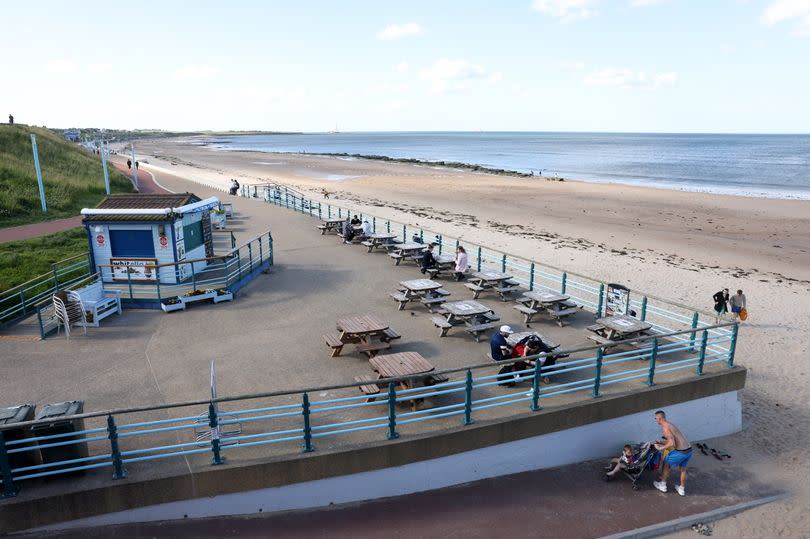Then and Now: A packed beach at Whitley Bay and the same scene more than 100 years later
Daytrippers and holidaymakers have flocked to this seaside location for generations.
Our archive photograph from the early years of the last century shows crowds on the sands at Whitley Bay - a name woven into the historic fabric of the North East leisure experience. We see a funfair in full swing, with shuggy boats, a helter skelter, and a carousel doing brisk business. As the waves roll in, meanwhile, it’s noticeable how everyone is fully dressed. Attitudes were much more demure then, and the advent of the flesh-revealing bikini and swimming trunks as accepted seaside attire wouldn’t arrive for another few decades.
In more recent times, many of us will have our own fond memories of days out at Whitley Bay and the famous Spanish City fairground, but the town’s origins as an iconic coastal destination can be found in the middle years of the 19th century.
Local historian Charlie Steel, an expert on the back story of this part of the world, explains how by the 1870s, shops, large houses and hotels were being constructed on the seafront. Two local builders, especially prominent at the time, Richard Nesbitt and Alfred Styan, were responsible for laying out many of the streets on the south side of Whitley.
(Incidentally, the Bay bit of Whitley Bay was only added in the late 19th century. Referred to before then as Whitley, or Whitley-by-the Sea, it is said that repeated confusion with the North Yorkshire resort of Whitby led to the place name being updated).

The wildfire spread of the railways was a major factor in Whitley’s expansion. The opening of the North Eastern Railway in 1882 brought increasing numbers of daytrippers into the burgeoning resort, as well as leading to its establishment as a popular commuter town. Between 1860 and 1898, The Esplanade, North Parade, South Parade, and Station Road were laid out, and by the time the Great War broke out in 1914, many residential streets in the town had been built.
Whitley Bay, of course, is synonymous with the Spanish City, a name derived from a travelling ‘Toreadors’ concert party which played in a temporary Spanish-style painted stage set in 1907. The unmistakable Spanish City with its spectacular dome opened in May 1910 – days after the death of the popular King Edward VII. The original pleasure palace had a 1,400-seat concert hall, restaurant, roof garden and tearoom. A ballroom was added in 1920, a decade when Whitley Bay was advertised as the ‘Blackpool of the North East’.
The first fairground had operated since 1908, attracting ever increasing numbers of visitors during each subsequent summer. The middle decades of the last century saw the Spanish City’s heyday. For many of us born and bred on Tyneside, the fair was a must-visit location in our formative years. Famously the subject of Dire Straits’ classic 1981 song, Tunnel Of Love, the fairground finally closed in 1999. A new reborn Spanish City leisure venue opened its doors in the summer of 2018.
As Whitley Bay enjoyed boom years during the 1950s, ‘60s, and ‘70s - a time before foreign package deals saw increasing numbers of Brits jet off to enjoy sunshine holidays in Spain and elsewhere - the town was also famous for its ‘Scottish fortnight’. During the last week of July and the first week of August, Whitley Bay would play host to thousands of Scottish holidaymakers, especially from the Glasgow area, and most guest houses and hotels would be full. The names of local guest houses often reflected a Scottish theme. There was the Aberfeldy Hotel on Park View, the Glencoe Hotel on South Parade, and the Glenogle Guest House on Victoria Avenue to name a few.
Much has changed in Whitley Bay since those halcyon days, but after a period of decline it’s back on the up as a desirable location, having recently been named as one of the UK’s bestplaces to live by the Sunday Times.

 Yahoo News
Yahoo News 
